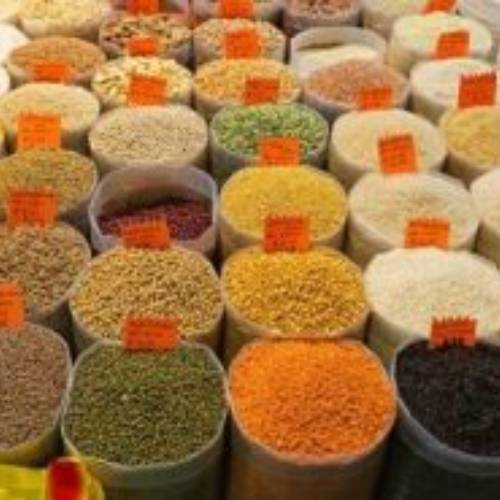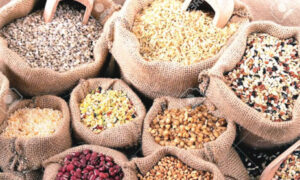India unveils ambitious pulse plan

India aims to become self-sufficient in pulses by 2028-29, potentially ending major imports from suppliers like Canada. Backed by procurement policy reforms and rising production, the plan could disrupt global trade. While Indian demand is growing, especially with welfare schemes and a rising middle class, exporters are advised to adapt. Meanwhile, China’s pulse imports remain volatile amid tariffs and policy shifts.
Canada’s largest pea and lentil customer says it will no longer need to import those crops in the very near future.
Indian finance minister Nirmala Sitharaman recently announced in the 2025-26 budget that the country will be self-sufficient in pulses starting in 2028-29.
Deepak Agarwal, managing director of the National Agricultural Cooperative Marketing Federation of India Ltd. (NAFED), has a big role to play in the government’s plan.
NAFED was established in 1958 to promote co-operative marketing of agricultural products to benefit the farmers of India.
He said the government has established “a very, very aspirational and ambitious rule” that has implications for pulse exporters around the world.
“This may ruffle some feathers in the global pulses industry,” he told delegates attending the Global Pulse Confederation’s Pulses 25 conference in Singapore.
Agarwal said India has met with delegations from exporting countries such as Canada, Australia and Brazil to inform them that they have a five-year window to change their rotations to adapt to the new looming reality.
Pulse Canada president Greg Cherewyk said India has long had an objective of becoming self-sufficient in agriculture.
In recent years, it has made significant strides toward that goal through investments in research, production-oriented incentives, procurement, marketing and distribution.
However, he noted that consumption continues to grow in that vital pulse-consuming region of the world due to population growth, increased disposable income and the shift from carbohydrate-rich to protein-rich diets.
“While this presents challenges for achieving self-sufficiency, overall, it is a positive story,” Cherewyk said in an email.
“Increased pulse consumption benefits Indian agriculture, supports the nutritional needs of Indian consumers, and, as long as there is a role for Canada in bridging the gap between India’s production and consumption, it is also good news for the Canadian pulse industry.”
Agarwal said Indians consume 30 million tonnes of pulses a year and produce 25 million tonnes, leaving a five million tonne annual gap that is filled by exporters such as Canada.
However, that gap will shrink as India advances towards self-sufficiency. The government is already taking steps to encourage increased pulse planting.
In the past, it has pledged to purchase 25 per cent of domestic pulse production at its minimum support price, which is usually set below the market price.
“Recently, a radical shift in this entire policy has been made,” said Agarwal.
The government is now purchasing 100 per cent of its pigeon pea, black matpe and lentil production at market prices.
“India is on the cusp of making a pulse revolution as we have done through our green revolution,” he told conference delegates.
Cherewyk noted that the National Commission on Agriculture has determined that India’s per capita need for pulses is about 70 grams per day. That would equate to 37.5 million tonnes of annual demand.
So, there is plenty of room for growth in demand in that market.
Agarwal also believes India’s pulse consumption will continue to rise, thanks to a growing middle class and the inclusion of pulses in welfare programs such as the Integrated Child Development Scheme and the Public Distribution Scheme.
However, he believes Indian farmers will be able to meet that demand themselves without any outside help.
China is the other key market for Canadian peas.
Cao Derong, president of the China Chamber of Commerce of Import and Export of Foodstuffs, Native Produce and Animal Byproducts, said future demand will be strong in that market as well.
“China’s pulse imports will continue to rise steadily,” he told the Pulses 25 delegates.
The country produces about 4.8 million tonnes of pulses per year and imports another 2.4 million tonnes.
It imported 1.39 million tonne of peas in 2024, down 49 perc ent from 2023’s robust program of 2.66 million tonnes.
Derong said imports plummeted due to high carryover stocks from 2023 and North America’s anti-dumping investigation on Chinese pea protein, which reduced demand from China’s pea fractionation industry.
“Pea imports are affected by trade policy very much,” he said.
“It’s up and down each year dramatically.”
China currently has a 100 per cent import tariff in place on Canadian peas in response to Canada’s tariffs on Chinese electric vehicles, steel and aluminum.
Prime minister Mark Carney recently said removing China’s tariffs is a “top priority” for his government.
For almost 30 years of expertise in the agri markets, UkrAgroConsult has accumulated an extensive database, which became the basis of the platform AgriSupp.
It is a multi-functional online platform with market intelligence for grains and oilseeds that enables to get access to daily operational information on the Black Sea & Danube markets, analytical reports, historical data.
To Read more about Wheat News continue reading Agriinsite.com
Source : Ukr Agro Consult















